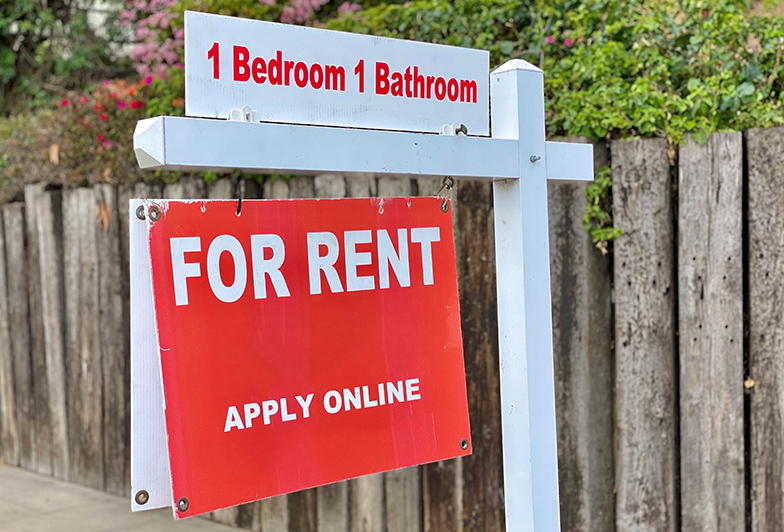The Best Ways to Save for Buying a Rental Property
Key Takeaways
-
Most investment properties require a 20% down payment, plus additional funds for closing costs, repairs, and potential vacancies.
-
A rental property should generate at least 1% of its purchase price in monthly rent to ensure profitability.
-
-
Understanding purchase costs, financing options, and potential risks helps investors build a solid financial strategy for rental property ownership.
Historically, real estate has been considered a solid, low-risk investment and a good way to diversify a financial portfolio. Owning investment properties is a wise financial strategy, but purchasing rental property requires thoughtful analysis.
When buying a rental property, there is a lot to consider.
- Is the property in a location that’s easy to rent?
- What is your budget?
- How will you pay for it?
Every property is different, but there are some common denominators in making educated investment decisions. We’re going to discuss some of those denominators and cover the steps to saving and buying a rental property.
How Much Do I Need To Save To Buy Rental Property?
The downpayment is an important starting point when calculating the funds needed to invest in rental property, and most investment properties require a 20% down payment. It will be important to research the market or area. Is it a growing market that lowers financial risk and increases cash flow outcomes? If you’re new to buying a rental property, lower-cost properties are a good start.
Let’s say the property being considered is $150,000 to $200,000. The 20% down payment needed is $30,000 to $40,000. However, in addition to the down payment, you will need additional funds for closing costs and repairs, which can be several thousand dollars, along with the money required to compensate for vacancies.
How To Calculate Rental Property Purchase Costs
We know that the most obvious cost of purchasing rental property is the 20% down payment, but what else needs to be considered?
There are numerous expenses that investors need to take into account when considering investment properties. These include:
- Acquisition expenses - fees for loan applications, home inspections, appraisals, lawyers, real estate transfer taxes, and title insurance.
- Leasing expenses - screening tenants, evictions, and listing rentals.
- Operating expenses - property management, repairs and maintenance, landlord insurance, HOA fees, mortgage payments, and vacancies.
- Owners expenses - LLC fees, office supplies, professional fees, phone, utilities, and travel.

Calculating an accurate estimate of all the costs can be tricky, but working with investor-friendly real estate agents and experienced property management companies or tapping into the knowledge of the people you network with can help.
A couple of standards need to be kept in mind when investing in rental property:
- The 1% rule uses the purchase price of a property to calculate the gross income a rental property could generate. For example, our $150,000 to $200,000 property should see a gross rent of $1,500 to $2,000 monthly.
- The 50% rule states that your operating expenses (minus the mortgage payment) for your rental property will be half of the gross rental income.
Research Financing Options
While some investors have the ability or desire to pay cash when buying a rental property, most need to seek financing options. The rule that you’ll need to save 20% for the down payment can come with a caveat. If your lender only approves 70 of the 80% you were expecting, you’ll need to be able to cover the outstanding 10%. If you’ve researched and are realistic about the finances, unexpected bumps won’t be a problem.
Understand that residential rental property loans generally have higher interest rates and large required down payments. However, the loans are fully amortized over 30 years, which makes creating accurate pro-forma cash flow sheets easier.
Financing for investment properties can include:
- Conventional real estate financing will likely require higher down payments if the property is or may become a rental unit. Lenders will consider your credit scores, assets, liabilities, and ability to carry the loan burden.
- Home equity loans allow you to borrow against your home to buy rental property at a lower interest rate.
- Private money loans have less strict borrowing requirements but come with higher interest rates.
When applying for a rental property loan, you must have an existing cash flow statement or, if the property isn’t yet rented, a pro forma one. When drafting this statement, you’ll need to include:
- Gross potential rental income
- Vacancy allowance, which considers lost rental income
- Fees for leasing and property management
- Operating expenses, which are typically 20% of gross rental income
- Utilities
- HOA fees
- Property taxes
- Insurance
Strategically Save Your Money
Successful saving involves good strategies and isn’t haphazard. You’ll need to be deliberate and take steps to get out of debt. Other ways to save include automating savings, setting realistic goals, and building an emergency fund.
It helps to organize your finances and develop a monthly household budget that records your after-tax income and expenses. Take what’s left and start building savings for the rental property. A high-yield savings account is a great way to save for investment properties.
Boost Your Income
Boosting your income is another way to meet savings goals quickly. We can hear the collective groan about getting a second job, but hear us out - it’s not the only way to make money. Creative people are making good money by selling with online classifieds, eBay, and local Facebook groups. Your garage, attic, and household treasures you’ve not used are worth something to others.
Side hustles like dog walking, food delivery, working as a personal assistant, or freelance writer let you make extra money while setting your schedule.
Fixed-rate, passive investments such as bonds, certificates of deposits, and certain annuities provide a passive, predictable income and don’t require much management. Short Notes, with their annualized rates of up to 9%, are a solid choice for making your money work for you.
Connect Invest’s Short Notes, for example, offer terms of 6 to 24 months, guaranteed fixed-rate monthly income, high-than-average yields, and minimum investments of only $500.
Avoid Savings Mistakes
While you can’t predict everything you may come up against, there are some common pitfalls to avoid on your savings journey. These include:
- Not budgeting for renovations.
- Failing to account for emergencies or lost income because of vacancies.
- Neglecting to understand landlord/tenant laws.
- Not having a grasp of how lenders calculate rental income.
- Forgetting to budget for the required private mortgage insurance (PMI) if your down payment is less than 20%.
We’ve said it before, but we’ll reiterate it here: Tap into the knowledge and experience of investor-friendly real estate agents, online landlord groups, friends who own rental property, and your potential lender. They are valuable resources to help you avoid the common mistakes of purchasing a rental property.
The Bottom Line
Talk to experienced landlords, and they’ll tell you that owning rental property is a lot of work, but it’s also very rewarding on many levels. Preparation is the key to successful investing, and purchasing rental property is a great way to diversify your financial portfolio.

